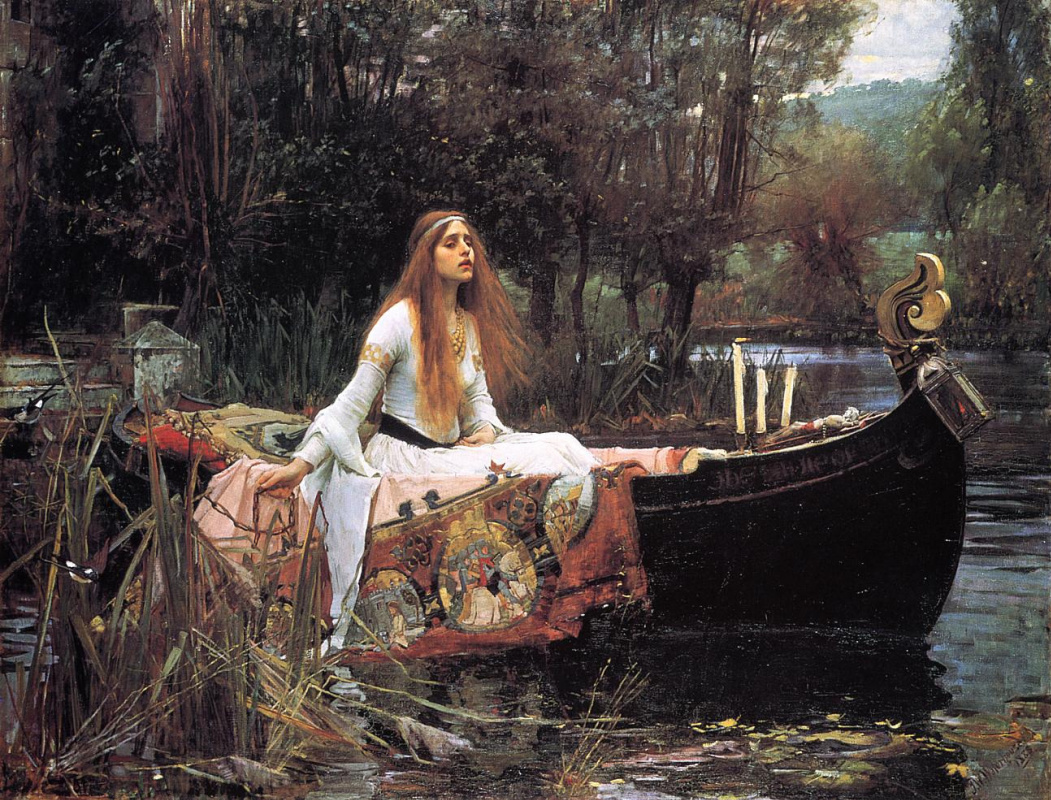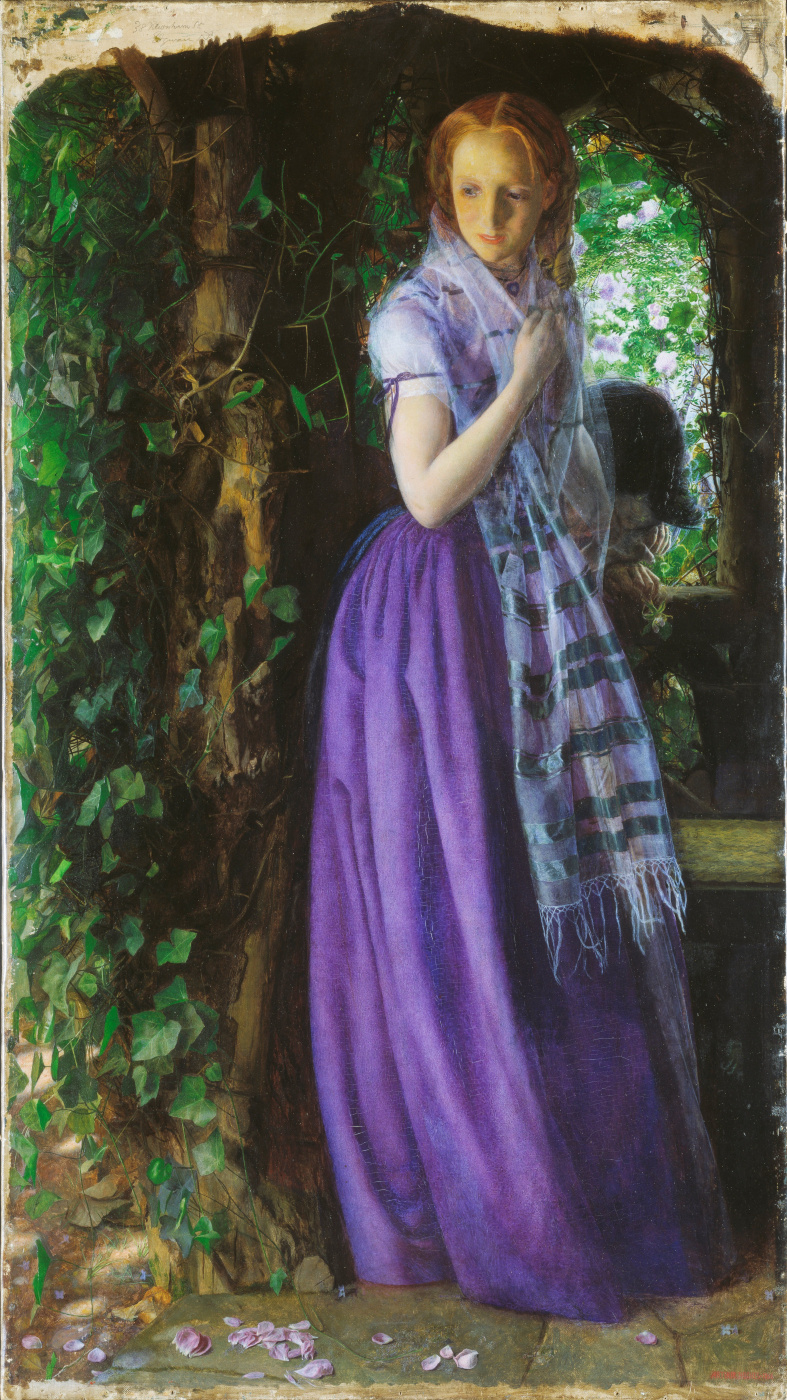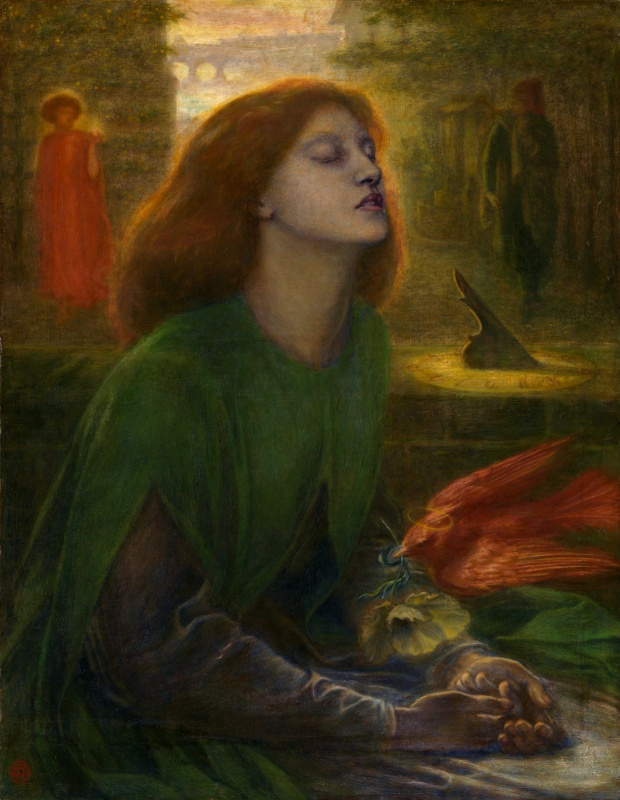Being on display in Palazzo Reale, Milan, the exhibition "Preraffaelliti: Amore e Desiderio" opens love, desire, nature, poetry, myth and beauty through the masterpieces from the Pre-Raphaelite collection of the Tate Gallery, London. It analyses the art from the 19th-century artists and their impact on the Italian art production. Eighty epic Pre-Raphaelite works are exhibited to the public for the first time in Milan thanks to the extraordinary collaboration project between Palazzo Reale and Tate Britain.

Carol Jacobi, curator of British Art at the Tate in London brought together eighteen Pre-Raphaelite artists in eighty works, including "Ophelia" by John Everett Millais and the "Lady of Shalott" by John William Waterhouse, the iconic paintings that rarely leave the United Kingdom to be lent. It will also avail itself of Maria Teresa Benedetti’s contribution concerning the relationship of the Pre-Raphaelites
with Italy.
Ophelia
1852, 76.2×111.8 cm
The Pre-Raphaelites
was an art movement born in England in 1848 by artists such as Dante Gabriel Rossetti, John Everett Millais and William Holman Hunt. A group of rebellious young artists emulated the spirit of early Renaissance
painting in protest against the art establishment of the era and society at large. Worshiping the work of Italian artists of the late Middle Ages and the Early Renaissance
, who had lived and worked before Raphael, they called themselves the "The Pre-Raphaelite Brotherhood". Later the three founders were joined by Rossetti’s younger brother (William Michael Rossetti), James Collinson, Frederic George Stephens and Thomas Woolner.
Radically flouting convention, these artists revelled in the use of brilliant colour, meticulous detail and exquisite layering. The Pre-Raphaelites
drew inspiration from the great love stories of history and literature, the tempestuousness of lustful entanglements, and the wonder of religious icons. They did a true artistic revolution as they created a new artistic genre, sometimes poetic and sexy, and sometimes raw, as they combined medieval romanticism
with modern life to produce literary scenes, portraits and landscapes rich in symbolism.
Monna Vanna
1866, 88.9×86.4 cm
The masterpieces on display, which include John Everett Millais' Ophelia, John William Waterhouse’s Lady of Shalott and Arthur Hughes' April Love, are divided into different sections such as "Medieval Moderns", "Truth to Nature", "Love and Desire", "Romance", "Myth". The viewers are welcome to explore the goals and ideals of the art movement, the styles of various artists, the interest of the movement to the medieval and religious themes, despite the fact that the Pre-Raphaelites
were atheists for the most part. The focus is put on realism, the accurate reproduction of nature and the scientific study
of human anatomy, the ideals of beauty and romantic love, as well as the spirit of cooperation, one of the fundamental elements of the Pre-Raphaelites
art.
Lady of Shallot
1888, 153×200 cm
Particular attention is paid to the importance of the "Italian" inspiration in the context of Pre-Raphaelite poetics. The typical themes explored, indeed, are particularly striking as they create a link between art and literature, as they include biblical stories, Dante Alighieri, Shakespeare, patriotism and social sensitivity. Bearing witness to this, the exhibition shows "iconic" paintings on the themes going from Dante Alighieri and his poem (Paolo and Francesca and Dante’s dream at the time of the death of Francesca by Dante Gabriel Rossetti) to the Italian landscape
tout court (View of Florence from Bellosguardo by John Brett).
Left: Sir John Everett Millais. Ophelia (detail), 1851−52, oil on canvas, 762×111.8 cm (Tate Britain, London)
Another Pre-Raphaelite deity is nature in all its primordialness, depicted with maximum realism and botanical accuracy. John Everett Millais recounted, with some humor and a fair amount of irony, the problems of working outdoors in letters to his friend: "I sit tailor-fashion under an umbrella throwing a shadow scarcely larger than a halfpenny for eleven hours, with a child’s mug within reach to satisfy my thirst from the running stream beside me. I am threatened with a notice to appear before a magistrate for trespassing in a field and destroying the hay."
The execution of Ophelia shows the Pre-Raphaelite style at its best. Each reed swaying in the water, every leaf and flower are the product of direct and exacting observation of nature. As we watch the drowning woman slowly sink into the murky water, we experience the tinge of melancholy so common in Victorian art. It is in his ability to combine the ideals of the Pre-Raphaelites with Victorian sensibilities that Millais excels. His depiction of Ophelia is as unforgettable as the subject herself.

Sir John Everett Millais. Ophelia (detail), 1851−52, oil on canvas, 762×111.8 cm (Tate Britain, London)
Another bright feature of the Pre-Raphaelite artists in all respects is the desire to recreate the deep and vibrant colors characteristic of the masters of the Quattrocento era. The dark, overwhelmed with bitumen works of classical academics have been completely rejected — the pre-Raphaelites
mastered the new technique of painting and began to paint on a layer of whitewash applied on the canvas ground, due to which the colors remained juicy and fresh.
April love
1856, 88.9×49.5 cm
Also read
The Pre-Raphaelites
Within their brushstrokes, we find not only an imaginative and dreamy world but also references to timely social issues, such as critique of capitalism that renders it guilty of erasing the beauty of the world and vulgarizing art. The Middle Ages, the Bible, and European landscapes are the subjects found most frequently in the style of these Renaissance
figures' works that refer to an even stronger sense of enchantment.
Having existed for only five years, the Pre-Raphaelite Brotherhood was formally dissolved in 1853, but the artists involved continued to use its main ideas in their art. These artists were among the first to show the world the figure of a femme fatale, seductive, mysterious, passionate, and, at the same time, innocent and fragile. The new techniques of working with pigments and paints, the open-air sessions with living models breathed new life into the pictorial traditions of England. They, in fact, invented a new form of beauty, which, in turn, influenced fashion, so the complex hairstyles and tight corsets have had their day.
Aurelia (Fazio's Lover)
1873, 43.2×36.8 cm
This exhibition will be open to the public until October 6, 2019
By the way, "Pre-Raphaelite. Love and desire" exhibition transformed itself into a theatrical performance. Some of the most famous paintings from the beautiful collection displayed at the exhibition came to life thanks to a real tableau vivant as six theatre actors of the Neapolitan company "Teatri 35" made spectators relive the perfectly reconstructed scenes of some of the nineteenth century paintings that they could admire at the exhibition amidst accurately reconstructed draperies and fabrics, music and lights. A real show brought everyone closer to Pre-Raphaelite art, strongly expressive and evocative in a non conventional manner.
Based on official materials from Palazzo Reale




























